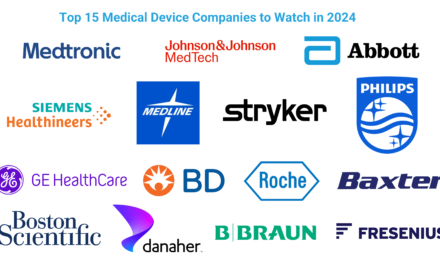
How do Indian manufacturers integrate digital health solutions into their medical devices?

Indian medical device manufacturers are increasingly integrating digital health solutions into their products to improve healthcare delivery, enhance patient outcomes, and align with global trends in connected healthcare. This integration leverages technologies such as artificial intelligence (AI), Internet of Medical Things (IoMT), and cloud computing to address the unique needs of the Indian market and beyond. Here’s how Indian manufacturers are integrating digital health solutions into their medical devices:
1. Internet of Medical Things (IoMT) Integration
- Smart Devices:
- Development of connected devices like wearables, patient monitors, and diagnostic tools that provide real-time health data.
- Examples: IoT-enabled glucometers, ECG monitors, and blood pressure monitors.
- Remote Monitoring:
- Devices equipped with IoT technology allow healthcare providers to monitor patients’ conditions remotely.
- Beneficial for managing chronic diseases and post-operative care, especially in rural areas.
- Data Transmission:
- IoT-enabled devices transmit data to cloud platforms or healthcare apps, enabling seamless data sharing with doctors and caregivers.
2. Artificial Intelligence (AI) and Machine Learning
- AI in Diagnostics:
- AI-powered diagnostic tools analyze large datasets to detect patterns and provide accurate, timely diagnoses.
- Examples: AI-enabled radiology tools for detecting abnormalities in X-rays or CT scans.
- Predictive Analytics:
- Machine learning models are used to predict patient outcomes, enabling early intervention and personalized treatment plans.
- AI Chatbots:
- Integrated into telehealth platforms to assist patients with basic queries, symptom checks, and appointment scheduling.
3. Cloud-Based Healthcare Solutions
- Data Storage and Access:
- Cloud platforms are used for storing large volumes of patient data collected from medical devices.
- Ensures accessibility for healthcare providers and patients across locations.
- Telemedicine:
- Integration with cloud platforms supports telemedicine applications, allowing real-time consultations and diagnostics.
4. Mobile Health (mHealth) Integration
- Smartphone Connectivity:
- Medical devices are designed to pair with mobile apps via Bluetooth or Wi-Fi, enabling users to track their health metrics.
- Examples: Connected fitness trackers, smart scales, and sleep monitors.
- Health Apps:
- Manufacturers develop companion apps for devices, offering features like data visualization, health tips, and progress tracking.
- Patient Engagement:
- Apps provide reminders for medication, appointments, and device usage, improving adherence and outcomes.
5. Telehealth-Enabled Devices
- Remote Diagnostics:
- Devices like digital stethoscopes, portable ultrasound machines, and otoscopes are integrated with telehealth platforms for virtual consultations.
- Home Care Solutions:
- Telehealth-enabled devices cater to home care setups, especially for monitoring elderly or chronically ill patients.
6. Wearable Devices
- Health Monitoring Wearables:
- Indian manufacturers are producing affordable wearables for tracking heart rate, oxygen saturation (SpO2), and activity levels.
- Examples: Smartwatches, fitness bands, and ECG monitoring patches.
- Chronic Disease Management:
- Devices help in monitoring conditions like hypertension and diabetes, with alerts for abnormal readings.
7. AI in Robotics and Surgery
- Robotic-Assisted Surgery:
- Integration of AI in robotic systems to assist surgeons in performing precise and minimally invasive procedures.
- Rehabilitation Robotics:
- Development of AI-powered robotic exoskeletons for physical rehabilitation.
8. Smart Imaging Systems
- AI-Enhanced Imaging:
- Devices integrate AI algorithms to enhance image quality, detect anomalies, and reduce interpretation time.
- Examples: AI-powered MRI and CT scanners.
- Cloud Connectivity:
- Imaging devices are connected to cloud platforms for sharing and collaborative analysis of scans.
9. Data Security and Compliance
- HIPAA and GDPR Compliance:
- Ensuring that digital health solutions adhere to global data privacy and security standards.
- Blockchain:
- Some manufacturers explore blockchain for secure, tamper-proof health data management.
10. Addressing Rural Healthcare Challenges
- Portable and Connected Devices:
- Manufacturers are creating portable diagnostic and monitoring devices for use in remote areas.
- Integration with Telemedicine:
- Devices are used in conjunction with telemedicine platforms to bridge the healthcare gap in underserved regions.
Examples of Indian Companies Leading the Way
- Trivitron Healthcare:
- Develops AI-powered diagnostic devices and imaging systems.
- Forus Health:
- Produces portable ophthalmic diagnostic devices integrated with AI for early detection of eye diseases.
- Sahajanand Medical Technologies (SMT):
- Integrates digital solutions into cardiovascular implants to enable real-time monitoring.
- Medtronic India (local operations):
- Produces insulin pumps and other connected devices.
- Healthcare Startups:
- Startups like Qure.ai and Niramai leverage AI in diagnostics and imaging.
Benefits of Digital Health Integration
- Enhanced Patient Outcomes:
- Real-time monitoring and predictive analytics lead to better diagnosis and treatment.
- Cost Efficiency:
- Digital devices reduce the need for frequent hospital visits, making healthcare more affordable.
- Wider Accessibility:
- Telehealth-enabled and portable devices make healthcare accessible in rural and underserved regions.
- Global Competitiveness:
- Integration of digital health technologies boosts India’s competitiveness in global medical device markets.
Indian manufacturers are rapidly embracing digital health solutions, transforming traditional medical devices into smarter, more efficient tools. This integration not only aligns with global healthcare trends but also addresses the unique challenges of India’s healthcare ecosystem, such as affordability, accessibility, and scalability. Continued investment in innovation, partnerships with technology providers, and supportive government policies will further accelerate this transformation.




























